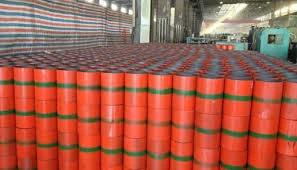- Afrikaans
- Albanian
- Amharic
- Arabic
- Armenian
- Azerbaijani
- Basque
- Belarusian
- Bengali
- Bosnian
- Bulgarian
- Catalan
- Cebuano
- Corsican
- Croatian
- Czech
- Danish
- Dutch
- English
- Esperanto
- Estonian
- Finnish
- French
- Frisian
- Galician
- Georgian
- German
- Greek
- Gujarati
- Haitian Creole
- hausa
- hawaiian
- Hebrew
- Hindi
- Miao
- Hungarian
- Icelandic
- igbo
- Indonesian
- irish
- Italian
- Japanese
- Javanese
- Kannada
- kazakh
- Khmer
- Rwandese
- Korean
- Kurdish
- Kyrgyz
- Lao
- Latin
- Latvian
- Lithuanian
- Luxembourgish
- Macedonian
- Malgashi
- Malay
- Malayalam
- Maltese
- Maori
- Marathi
- Mongolian
- Myanmar
- Nepali
- Norwegian
- Norwegian
- Occitan
- Pashto
- Persian
- Polish
- Portuguese
- Punjabi
- Romanian
- Russian
- Samoan
- Scottish Gaelic
- Serbian
- Sesotho
- Shona
- Sindhi
- Sinhala
- Slovak
- Slovenian
- Somali
- Spanish
- Sundanese
- Swahili
- Swedish
- Tagalog
- Tajik
- Tamil
- Tatar
- Telugu
- Thai
- Turkish
- Turkmen
- Ukrainian
- Urdu
- Uighur
- Uzbek
- Vietnamese
- Welsh
- Bantu
- Yiddish
- Yoruba
- Zulu
Exploring the Benefits and Applications of Steel Coupling in Structural Engineering
The Significance of Steel Couplings in Modern Engineering
In the realm of modern engineering, the efficient connection of various mechanical components is essential for the seamless operation of machinery. Among the myriad of connection methods available, steel couplings stand out as a robust and versatile solution. These components serve an essential role in transmitting torque, accommodating misalignments, and ensuring durability, making them indispensable in various applications across industries.
Definition and Types of Steel Couplings
Steel couplings are mechanical devices used to connect two shafts or components in a way that allows for the transmission of power or motion. They are designed to accommodate angular, parallel, or axial misalignments, which is crucial in maintaining the integrity of rotating machinery. There are several types of steel couplings, each tailored to meet specific engineering needs
1. Rigid Couplings These couplings provide a solid connection between two shafts with minimal misalignment. They are ideal for applications where precision is paramount.
2. Flexible Couplings Designed to allow for slight misalignment, flexible couplings provide a buffer against mechanical stress. They can absorb vibrations and shocks, making them suitable for applications involving variable loads.
3. Clamp or Split Couplings These couplings use a split design that allows for easy installation and removal without damaging the shafts. They are preferred in applications where maintenance is frequent.
4. Bellows Couplings Constructed from a thin-walled metal, bellows couplings can accommodate larger misalignments and are resistant to wear and fatigue. They are commonly used in high-precision applications.
Advantages of Steel Couplings
steel coupling

The advantages of using steel couplings in engineering design are numerous. Firstly, they offer exceptional strength and durability. Steel is a material known for its high tensile strength, which means that steel couplings can withstand heavy loads and resist deformation under stress. This characteristic is particularly important in heavy machinery and automotive applications.
Additionally, steel couplings are resistant to various environmental factors, including temperature fluctuations, moisture, and chemicals. This resistance extends the life of the couplings and reduces the need for frequent replacements, leading to decreased maintenance costs.
Another significant advantage is their versatility. Steel couplings can be designed to meet specific operational requirements, including size, shape, and alignment characteristics. This adaptability allows engineers to tailor their mechanical systems for optimal performance.
Applications of Steel Couplings
Steel couplings are used across a wide array of industries and applications. In the automotive sector, they are critical components in drive shafts, ensuring efficient power transmission from the engine to wheels. In manufacturing, they connect motors to various machines, facilitating the operation of conveyor systems, pumps, and turbines.
Moreover, in the construction industry, steel couplings are used in cranes and excavators, where they play a vital role in load handling. In the energy sector, particularly in wind and hydroelectric power generation, steel couplings are essential for connecting generators and turbines, ensuring the efficient conversion of kinetic energy into electrical energy.
Conclusion
In conclusion, steel couplings are fundamental components in modern engineering that facilitate the connection and operation of various mechanical systems. Their strength, flexibility, and resistance to environmental factors make them suitable for a wide range of applications across diverse industries. As technology advances, the design and manufacturing of steel couplings continue to evolve, paving the way for more efficient and reliable mechanical systems. Understanding the importance of these couplings and their application can lead to better engineering practices, ultimately enhancing productivity and reliability in various sectors.
-
Tubing Pup Joints: Essential Components for Oil and Gas OperationsNewsJul.10,2025
-
Pup Joints: Essential Components for Reliable Drilling OperationsNewsJul.10,2025
-
Pipe Couplings: Connecting Your World EfficientlyNewsJul.10,2025
-
Mastering Oilfield Operations with Quality Tubing and CasingNewsJul.10,2025
-
High-Quality Casing Couplings for Every NeedNewsJul.10,2025
-
Boost Your Drilling Efficiency with Premium Crossover Tools & Seating NipplesNewsJul.10,2025







